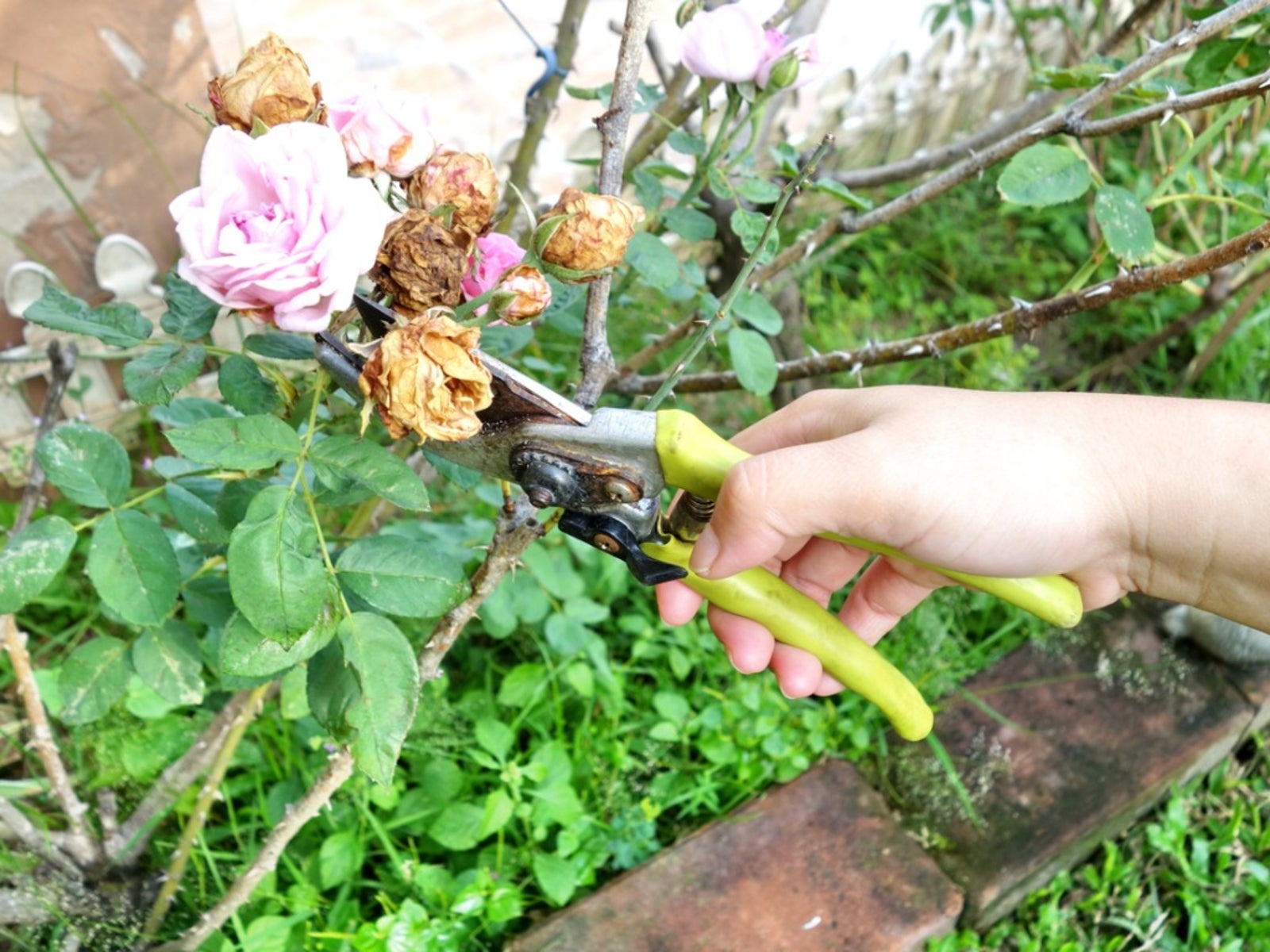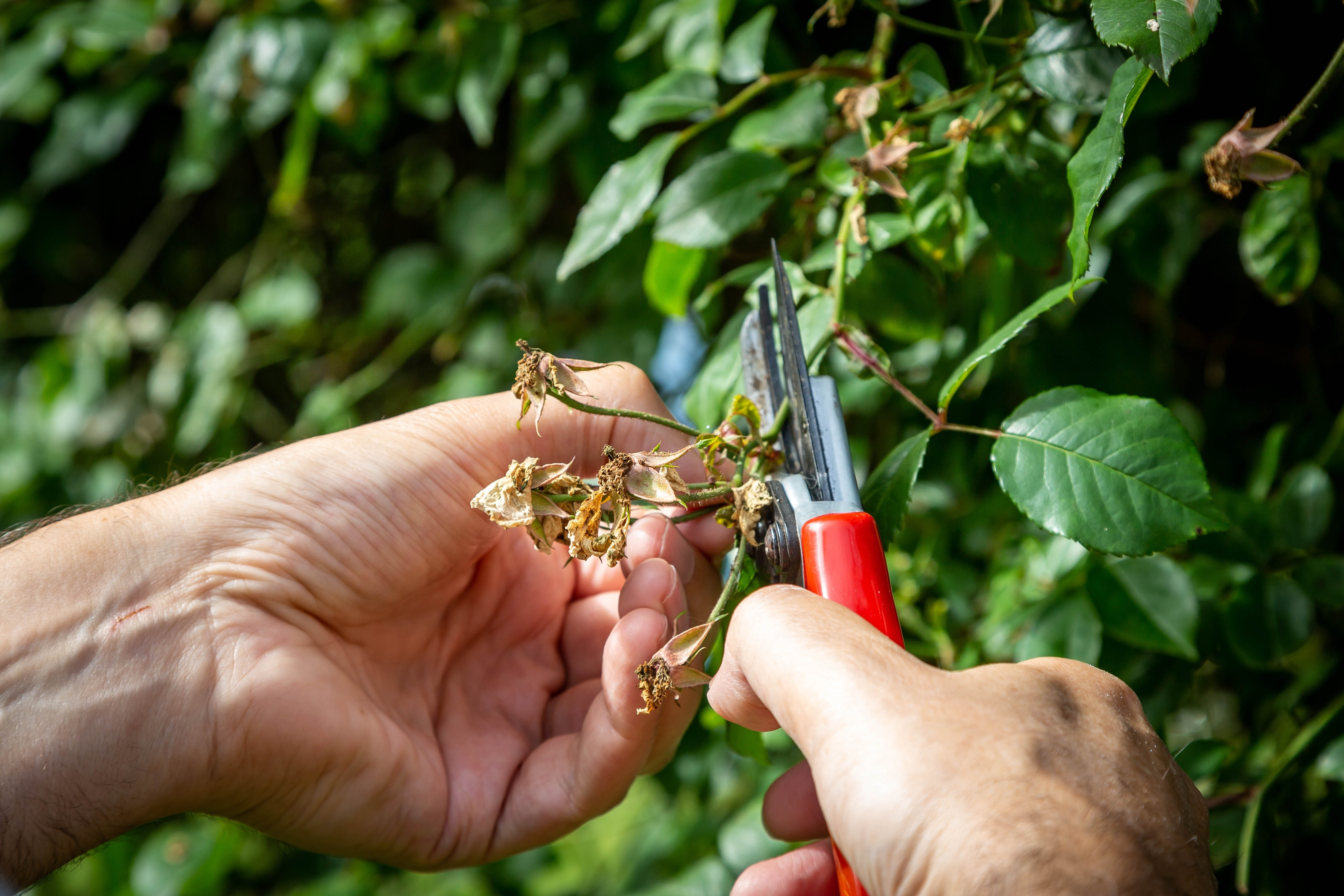Understanding the Basics of Rose Anatomy
To effectively deadhead a rose, it’s essential to understand the different parts of the plant. A rose plant consists of several key components, including the flower, stem, and leaves. The flower is the showy part of the plant, consisting of petals, sepals, and reproductive organs. The stem, also known as the cane, is the structural part of the plant that supports the flower and leaves. The leaves are the green, flat structures that carry out photosynthesis and provide nutrients to the plant.
When deadheading a rose, it’s crucial to identify the different parts of the plant to avoid damaging the stem or leaves. The stem is typically the thickest part of the plant, and it’s where the flower is attached. The leaves are usually found along the stem, and they can be either simple or compound, depending on the type of rose. By understanding the basic anatomy of a rose plant, gardeners can effectively deadhead their roses and promote healthy growth.
In addition to understanding the different parts of the plant, it’s also essential to recognize the different types of stems found on a rose plant. There are two main types of stems: the current season’s growth and the previous season’s growth. The current season’s growth is typically the new, green stems that have emerged in the current growing season. The previous season’s growth is the older, woody stems that have been on the plant for a year or more. By recognizing these different types of stems, gardeners can effectively deadhead their roses and promote healthy growth.
How to Identify Dead Flowers on Your Rose Plant
Identifying dead flowers on a rose plant is a crucial step in the deadheading process. Dead flowers can be easily spotted by looking for visual cues such as wilted petals, brown edges, and droopy stems. When a rose flower is dead, the petals will typically droop and wilt, and the edges may turn brown or black. The stem that supports the dead flower may also become weak and droopy.
In addition to visual cues, gardeners can also use their sense of touch to identify dead flowers. Dead flowers will typically feel dry and brittle to the touch, while fresh flowers will feel soft and supple. By gently touching the petals and stems, gardeners can determine whether a flower is dead or alive.
It’s also important to note that some rose varieties may drop their petals naturally, even when the flower is still alive. In these cases, gardeners should look for other signs of dead flowers, such as a change in color or a soft, mushy texture. By carefully examining the flowers and stems, gardeners can accurately identify dead flowers and remove them to promote healthy growth and encourage new blooms.
The Best Tools for Deadheading Roses
When it comes to deadheading roses, having the right tools is essential. The best tools for deadheading roses include pruning shears, gloves, and gardening hand tools. Pruning shears are the most critical tool for deadheading roses, as they allow for precise cuts and help to prevent damage to the plant. Look for pruning shears that are specifically designed for deadheading roses, as they will typically have curved or angled blades that make it easier to reach into tight spaces.
Gloves are also an essential tool for deadheading roses, as they protect your hands from thorns and other sharp objects. Look for gloves that are made from a durable material, such as leather or synthetic fabrics, and that fit comfortably on your hands. Gardening hand tools, such as a small trowel or cultivator, can also be useful for deadheading roses, as they allow for gentle removal of debris and soil.
It’s also important to note that the quality of your tools can make a big difference in the deadheading process. High-quality pruning shears, for example, will make clean cuts and help to prevent damage to the plant, while low-quality shears may crush or tear the stems. By investing in good-quality tools, you can ensure that your deadheading process is efficient and effective.
A Step-by-Step Guide to Deadheading Roses
Deadheading roses is a simple process that requires some basic knowledge and technique. Here’s a step-by-step guide on how to deadhead roses:
Step 1: Inspect the Rose Plant – Before you start deadheading, inspect the rose plant to identify the dead flowers. Look for wilted petals, brown edges, and droopy stems.
Step 2: Cut the Stem – Using pruning shears, cut the stem of the dead flower at a 45-degree angle, about 1/4 inch above a leaf node. Make sure to cut just above a leaf node, as this will help the plant to heal quickly.
Step 3: Remove the Dead Flower – Gently pull the dead flower away from the stem, taking care not to damage the surrounding leaves or stems.
Step 4: Dispose of the Debris – Dispose of the dead flower and any other debris, such as fallen leaves or stems.
Step 5: Inspect the Plant Again – After deadheading, inspect the plant again to make sure that all dead flowers have been removed.
By following these steps, you can effectively deadhead your roses and promote healthy growth and blooming.
Tips for Deadheading Different Types of Roses
Deadheading is an essential part of rose care, and different types of roses require slightly different approaches. Here are some tips for deadheading different types of roses:
Hybrid Tea Roses: These roses produce large, repeat-flowering blooms that require regular deadheading to promote new growth. When deadheading hybrid tea roses, make sure to cut the stem at a 45-degree angle, just above a leaf node.
Floribunda Roses: These roses produce clusters of blooms that require deadheading to promote new growth. When deadheading floribunda roses, make sure to cut the entire stem, rather than just the individual blooms.
Climbing Roses: These roses produce long, trailing stems that require deadheading to promote new growth. When deadheading climbing roses, make sure to cut the stem at a 45-degree angle, just above a leaf node.
Shrub Roses: These roses produce repeat-flowering blooms that require regular deadheading to promote new growth. When deadheading shrub roses, make sure to cut the stem at a 45-degree angle, just above a leaf node.
By following these tips, you can ensure that your roses receive the best possible care and continue to thrive and bloom throughout the growing season.
Common Mistakes to Avoid When Deadheading Roses
Deadheading roses can be a straightforward process, but there are some common mistakes to avoid in order to ensure the best results. Here are some common mistakes to watch out for:
Cutting Too Much of the Stem: One of the most common mistakes when deadheading roses is cutting too much of the stem. This can damage the plant and reduce its ability to produce new blooms. When deadheading, make sure to cut just above a leaf node, and avoid cutting too much of the stem.
Not Removing the Entire Dead Flower: Another common mistake is not removing the entire dead flower. This can leave behind a portion of the dead flower, which can continue to draw energy from the plant. When deadheading, make sure to remove the entire dead flower, including the stem and any remaining petals.
Not Disinfecting Pruning Tools: Failing to disinfect pruning tools can spread disease and pests from one plant to another. When deadheading, make sure to disinfect your pruning tools with a solution of bleach and water to prevent the spread of disease.
Deadheading at the Wrong Time: Deadheading roses at the wrong time can also be detrimental to the plant. Avoid deadheading in the fall, as this can encourage new growth that may not have time to harden off before winter. Instead, deadhead in the spring and summer, when the plant is actively growing.
By avoiding these common mistakes, you can ensure that your roses receive the best possible care and continue to thrive and bloom throughout the growing season.
How to Use Deadheading to Promote Healthy Rose Growth
Deadheading is an essential part of rose care, and when done correctly, it can promote healthy rose growth and encourage new blooms. By removing dead flowers, you are directing the plant’s energy towards producing new growth, rather than seed production. This can lead to a more vigorous and healthy plant, with more blooms and a longer blooming season.
In addition to promoting new blooms, deadheading can also help to increase plant vigor. By removing dead flowers, you are allowing the plant to focus its energy on producing new growth, rather than maintaining old, dead flowers. This can lead to a more robust and healthy plant, with a stronger root system and more vigorous stems.
Deadheading can also help to reduce disease susceptibility in roses. By removing dead flowers, you are reducing the risk of disease spreading from the dead flowers to the rest of the plant. This can help to keep your roses healthy and disease-free, and reduce the need for pesticides and other chemicals.
Overall, deadheading is an important part of rose care, and can help to promote healthy rose growth, encourage new blooms, and reduce disease susceptibility. By following the tips and guidelines outlined in this article, you can learn how to deadhead your roses like a pro, and enjoy a more vibrant and healthy rose garden.
How to Use Deadheading to Promote Healthy Rose Growth
Deadheading is a simple yet effective way to promote healthy rose growth and encourage new blooms. By removing dead flowers, you are directing the plant’s energy towards producing new growth, rather than seed production. This can lead to a more vigorous and healthy plant, with more blooms and a longer blooming season.
One of the key benefits of deadheading is that it encourages new blooms. When a rose plant produces a flower, it directs its energy towards seed production. By removing the dead flower, you are signaling to the plant that it should produce new growth, rather than seeds. This can lead to a more prolific blooming season, with more flowers and a longer blooming period.
Deadheading can also help to increase plant vigor. By removing dead flowers, you are allowing the plant to focus its energy on producing new growth, rather than maintaining old, dead flowers. This can lead to a more robust and healthy plant, with a stronger root system and more vigorous stems.
In addition to promoting new blooms and increasing plant vigor, deadheading can also help to reduce disease susceptibility. By removing dead flowers, you are reducing the risk of disease spreading from the dead flowers to the rest of the plant. This can help to keep your roses healthy and disease-free, and reduce the need for pesticides and other chemicals.
Overall, deadheading is an important part of rose care, and can help to promote healthy rose growth, encourage new blooms, and reduce disease susceptibility. By incorporating deadheading into your rose care routine, you can enjoy a more vibrant and healthy rose garden.








